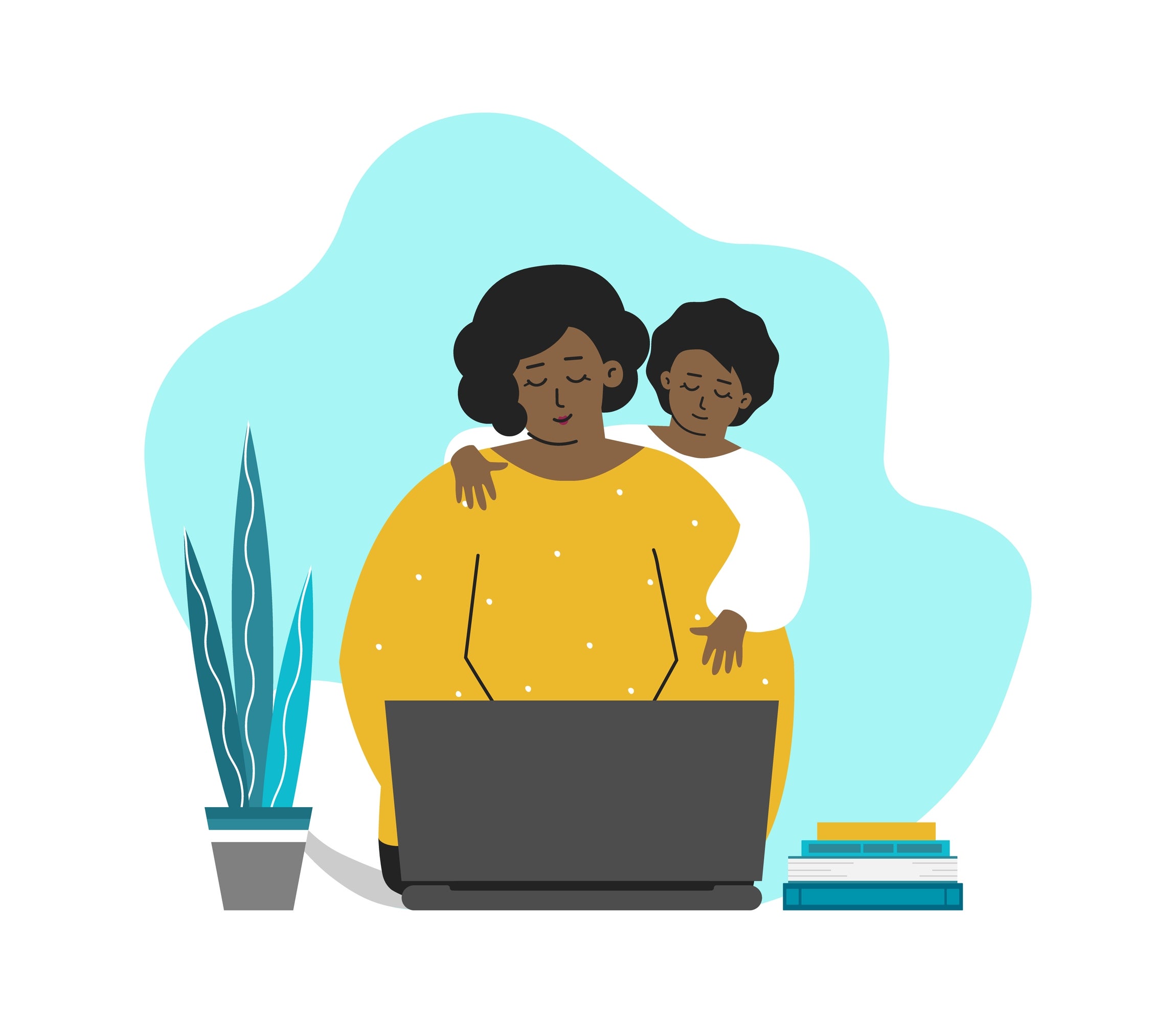Banner artwork by New Africa / Shutterstock.com

Balakrishnan, who was born in India and immigrated to Sydney when she was seven years old, has extensive experience in the legal industry. She started in private practice, where she found herself to be a minority among white men. She later transitioned in-house, where she discovered more well-intentioned colleagues and more engaging conversations about diversity, equity, and inclusion (DEI).
When she moved into the tech industry, which had a more racially diverse workforce, she began to realize, first-hand, the positive impact that a diverse team can have on a company's success and culture.
From Balakrishnan's perspective, the tech industry tends to embrace flexible working, comfortable clothing in the office (no suits) and there wasn't that sense of "presenteeism" that dominated the culture of law firms. She observed that these relatively simple differences opened doors to people who otherwise couldn't operate in a more traditional culture (maybe because of carer responsibilities or maybe because they are introverted and can't stomach the aggressive networking). As a result the company got the benefit of a diverse range of perspectives and staff who really valued their workplace culture and as a result were motivated to perform.
Simple differences opened doors to people who otherwise couldn't operate in a more traditional culture.
Balakrishnan reflects that DEI is a relatively new concept in Australia — despite Australia's history of racism and exclusion, particularly towards its indigenous population, the infrastructure and support programs for DEI initiatives are lacking. She also notes that the lack of diversity at the top end of companies can make it challenging for DEI initiatives to gain traction.
Despite these challenges, Balakrishnan remains optimistic about the future of DEI in Australia. She notes that ESG has become the number one topic in Australia recently, leading to a natural connection between DEI and environmental and social governance.
The Docket spoke to Balakrishnan about DEI, where it’s going, and how it can make a difference.
1. How is DEI approached in the early stages of an organization's development? What kind of balance must be struck? Is there anything that has to be/must be sacrificed?
The reality is that any kind of budget or specific resourcing for DEI in early-stage organizations is going to be non-existent. These organizations are heavily focused on getting profitable and often have pressure from investors wanting returns. However, this doesn’t mean early-stage organizations can’t start having conversations about and planning for DEI initiatives that are appropriate for the infancy stage. In my view, the really successful organizations understand that DEI and profit-making are not mutually exclusive — all the statistics point to diverse, inclusive organizations ultimately being more successful even in the traditional economic sense.
A great place to start is with education and awareness so that people are thinking about DEI holistically as part of what drives business outcomes.
A great place to start is with education and awareness so that people are thinking about DEI holistically as part of what drives business outcomes. I also suspect there is going to be increasing consumer demand for organizations to show active DEI engagement, to the point that consumers will prefer to work with organizations who have thought about and incorporated DEI into their strategy and procedures. This is already happening to some extent with ESG. I do find it sad that organizations won’t simply incorporate ESG and DEI into their business plans and ways of thinking because it is the right thing to do — it’s often only when there’s a possibility it will impact bottom line that it suddenly becomes a priority. But the overall outcome is positive so I’m choosing to focus on that!
2. As a working mother, how do you balance your responsibilities at home and at work? How do you think companies can better support working parents and promote work-life balance?
This is a great question to ask all parents because we do still expect people to work as though they do not have children. I think it’s important that this doesn’t become a "women’s issue" because hey — men have children too! We need more men to be taking parental leave, pushing for part-time work, and refusing to work overtime — in other words, working as though they actually have children and normalizing this way of working. This in turn will help women because it won’t be seen as a “career-killer” to want to work decent hours for example — it will just be normal.

A huge barrier is that the workplace as a structure just wasn’t set up to accommodate working parents — the hours and holiday periods for one thing are completely incompatible with school hours and holiday periods. We’re still using the same old structures and frameworks we were using when working men had wives at home dedicated to the domestic sphere. I think the best way companies can support working parents is to radically overhaul these basic structures — I’m all for the Scandinavian concept of a four-day working week, for example.
We're still using the same old structures and frameworks we were using when working men had wives at home dedicated to the domestic sphere.
I know people often lament that men tend not to be asked this question about how they balance work and home but there’s a reason for that — we know the answer. Statistically women are more likely to bear the burden of domestic and child-related tasks (even if they are the main breadwinner, even if they work more hours in paid employment) so the question takes on a particular significance for women.
Personally, balancing the responsibilities has been an evolving process. When we became parents my husband and I started out with a notion that our kids would have relatively equal access to both their parents (even if this didn’t make financial sense) and we’ve roughly tried to follow this while the kids were very young — we both worked part-time.
This changed when I took up the head of legal role at Shippit in May 2022 (my first full-time job since having my first child). My husband now works part-time during school hours and does the majority of pick-ups, drop-offs, and ferrying kids around to before and after school activities.
A particular challenge for me now that I’ve taken the plunge back into full-time work has been keeping up with the “mental load” of parenting-related logistics — for example, I realized this week that the kids need winter clothes now that the seasons are changing and we have to set aside time to go through the whole process of working out what clothing still fit which kid and updating their wardrobes accordingly. Sounds terribly mundane but it’s the kind of stuff that takes up mental space and loops around in your head when you’re a parent (although you do quickly learn shortcuts — we’ve been recycling the same old Easter hat for each kid for the past five years of school parades).
3. Can you tell us about your experiences as a woman of color in the legal profession? How have your experiences shaped your perspective on DEI issues in the workplace?
What I have noticed over the years is the amount of extra time and energy it takes to simply exist as a woman of color (and this probably applies in different permutations to other diversity groups). For example, most women (white or otherwise) walking home at night will exist in a state of alertness that men are largely oblivious to — they will mentally go through all their strategies for self-defense, they will pretend to be on their phone to deter any attention, they will grip their keys as a makeshift weapon — this level of hypervigilance doubles if you are a woman of color.

When I was a junior lawyer, I spent ages brainstorming with a fellow junior lawyer on various "strategies" we could employ when in the presence of certain male partners/barristers; we had a huge list of (what we thought were) witty comebacks and exit plans. It started off as a bit of a laugh but quickly became incredibly draining and took up a fair chunk of our time (time the young male lawyers were probably using to be productive and get promoted).
In the workplace it can be psyching yourself up to walk into a room full of white men, it can be wondering whether to push back on something or risk being viewed as the angry colored woman, it can be dealing with casual racism and sexism — this stuff takes up mental space and energy that most white men don’t even have to think about.
4. How should a company address unconscious bias in the workplace, and what training or education is provided to employees to raise awareness of these issues?
A really effective way to address unconscious bias is to hire diverse people at the top levels of an organization. Regular training is also important — I have been to some eye-opening educational sessions that have unlocked biases I didn’t even realize I had.

5. How should companies support the professional development and career growth of employees from underrepresented groups?
Hire them, listen to them, promote them. I don’t think it needs to be much more complicated than that, but this is where most organizations struggle — they might have excellent training programs and goal setting and what-have-you but when it comes to actual numbers — their leadership teams/boards/partnerships are still dominated by a fairly homogenous bunch.
6. How do you feel about the current backlash to DEI?
I think it’s always useful to look to who the backlash is coming from. Almost always it comes from one of two places: (1) people in power who are scared they will lose their power or (2) people who think they will “miss out” (and hence feel hard done by) because preference is given to someone who meets DEI criteria.
Both these fears are statistically unfounded — none of the DEI initiatives have stopped white men from joining the top echelons of government and politics, in board rooms, executive levels, and law firm partnerships.
7. The Docket ran an article last year about DEI implementation in Europe. Can you identify differences in how DEI is approached/implemented throughout the various global “spheres?"
I find this fascinating because it’s really clear that the USA is miles ahead of Australia and Europe on approaching and implementing DEI. From what I have read and observed, there is a real reluctance in Europe to even acknowledge the problem. Australia, I think, identifies the problem but will not commit to any meaningful action. I’m not going to attempt to pick apart the nuances of why this might be but there is a very noticeable gap.
8. What are your thoughts on DEI Maturity Model?
I like that it engages with the complexities involved and that it provides an achievable framework for organizations at all stages of maturity.
Despite current hurdles in the development of DEI in Australia, Sneha Balakrishnan remains optimistic. She underlines the necessity of education, awareness, and engagement in embedding DEI principles into the very core of organizations, citing how companies can unlock their full potential by fostering diversity. By advocating for shifts in the corporate landscape, Balakrishnan positions herself as a leading voice in the ongoing quest for workplace inclusivity and equity.




